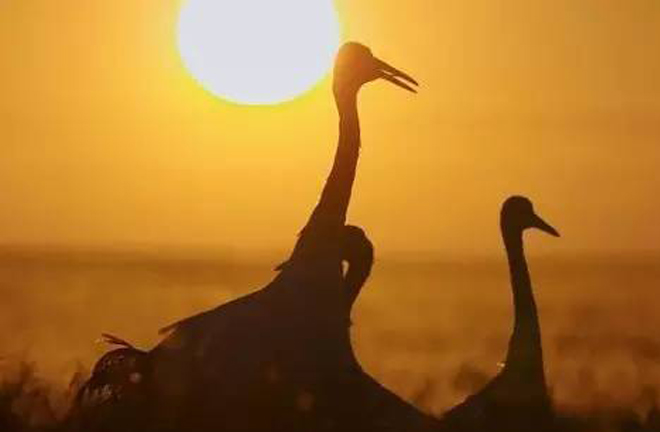Animal films mirror man’s mixed attitude toward nature

Animals have become a special group of silver screen stars in recent years.
The popularity of the recent film Born in China has sparked public interest in a special group of silver screen stars—the animals.
The number of quality feature films starring animals has been on the rise in recent years. Made possible by post-war innovations, films with animal narratives began to appear in the aftermath of World War II. The invention of the lightweight camera and portable sound recorder made the production of wildlife films easier.
In 1943, American director Fred Wilcox debuted the iconic family classic Lassie Come Home, the world’s first film to focus on the relationship between animals and humans. In it, a family falls on hard times, and they are forced to sell their beloved collie Lassie. Lassie escapes from her new masters and begins a long, perilous adventure to return to her true family.
At first, the wildlife films were mostly adapted from bestselling children’s books or cartoons with children as the main targeted audiences. This was out of consideration of the general theme of the films, i.e. to convey the idea that humans and wild creatures can live in harmony.
As the thematic content of the films became increasingly diverse, animal characters began to be more complex and take on new emotional dimensions. Before, humans had singularly defined them as gentle friends, but they were also capable of primal savagery.
In his classic film The Birds, English horror master Alfred Hitchcock explored this duality by taking something so seemingly harmless—common birds—and craft a terrifying metaphor of nature’s power through screeching, dissonant bird calls, masses of seagulls swarming menacingly and sudden, unexplained violent attacks by waves of sparrows.
Directed by the French Jean-Jacques Annaud, the Chinese-French co-production Wolf Totem is an example. The movie is an adaptation of the bestselling Chinese novel “Wolf Totem” by Jiang Rong. Set during the Cultural Revolution of the 1960s and 1970s, the story focuses on a young Beijing intellectual’s fascination with the wolves he encounters when he is sent to teach Mandarin to a band of Mongolian nomads in the majestic, scenic grasslands of Inner Mongolia.
The film required extraordinary preparation. The production team spent two years finding, raising and training a group of wolves in China.
In the film’s most compelling chase sequence, the camera soars over the snow-blanketed grassland to capture the startling speed, superior intelligence, and the unflinching brutality of the wolves as they ambush a herd of gazelles. Unlike many other films, which often portray a wolf’s honesty and nobility, Annaud’s film highlights the wolf’s quality of being “born free.” It becomes a symbol of spiritual freedom.
Even the intellectual’s doting affection for the cub he raises does not prevent it from leaving him to pursue the freedom and wildness that is inherent to its character. This is another philosophy of nature that the film tries to display: Animals are after all animals, which means they sometimes defy human expectations more than being docile and sentimental.
Generally speaking, the United States, France and Japan produce most of today’s influential wildlife films. In them, the “Othering” of Nature is reflected as well as humans’ effort to seek their own spiritual value and inner soul.
Those wildlife films from France are usually both scientific and poetic with great humanistic sensibilities, including The Bear and the tiger story Two Brothers directed by the French Jean-Jacques Annaud, March of the Penguins by Luc Jacquet, Oceans by Jacques Perrin. By focusing their lenses on the natural world, these directors lead the charge in the fight against environmental degradation.
American animal-themed films tend to focus on pets as the characters. Lassie Come Home, Because of Winn-Dixie and Marley & Me— all adapted from bestselling books—aim to foster a sense of trust and a familial bond between humans and animals. In this sense, it is understandable that according to a survey, among the nearly 80 American films involving animals produced during from 1980 to 2012, 28 have featured pet dogs as the protagonists.
The wildlife films of Japan capture the simplicity and peacefulness that can be found in nature, and most of them are rooted in local tales and folk customs, giving them a distinctive Japanese flavor. With its deeply moving image, the Japanese film Quills struck an emotion chord while the cute, affectionate cat protagonist Samurai stole audiences’ hearts.
